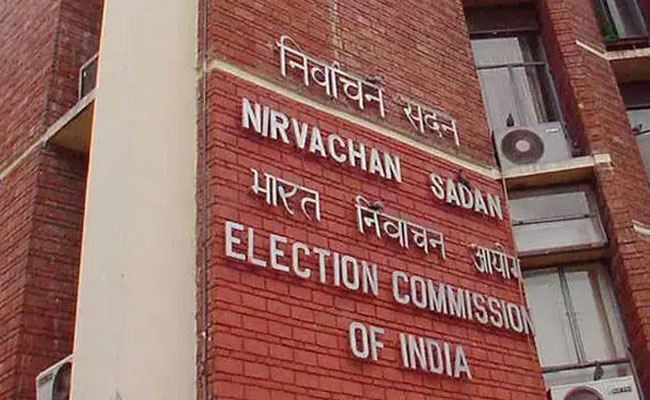London, April 23: Scientists have developed a new technique to bind proteins to nanoparticles that can help make drugs "smarter" and more effective at reaching their target.
The new technique decorates gold nanoparticles with a protein of choice so that they can be used to tailor drug to more accurately target an area on the body, such as a cancer tumour.
Gold nanoparticles are spheres made of gold atoms having a diameter of only few billionths of a metre which can be coated with a biological protein and combined with drugs to enable the treatment to travel through the body and reach the affected area.
"Gold nanoparticles are a vital tool in new drug development and drug delivery systems. We have unlocked the key to binding proteins and molecules so that those drugs will be more effective," said Enrico Ferrari, a nanobiotechnologist from Britain's University of Lincoln.
Until now, the proteins used to coat the nanoparticles had to be mixed together with particles which do not have the ability to control the way they bind, possibly making the drug less effective.
However, the new method, published in the journal Nature Communications, enables pharmacologists to place the proteins onto the gold nanoparticles layer by layer in a specific order.
This maintains the integrity of the protein so that the drug is more effective, opening up possibilities for the development of nanomedicine.
"This method might help to design nanomedicines that do not need extensive chemical modification of a protein drug or a nano-carrier and therefore can be developed more easily and faster," Ferrari added.
Researchers took fragments of proteins from bacteria and flatworms, which when fused together were effective at binding to the gold nanoparticle surface and able to form stable bonds to any other protein.
By mixing this fusion protein with gold nanoparticles, it permanently binds to the gold surface while also being able to stably bind a target protein.
The novel method could also potentially be applied to biosensors and diagnostic kits that use gold, such as those used in clinical settings to identify ongoing infections in patients' blood, the researchers said.
Let the Truth be known. If you read VB and like VB, please be a VB Supporter and Help us deliver the Truth to one and all.
Bengaluru (PTI): Targeting Chief Minister Siddaramaiah and the Congress government in Karnataka on corruption, BJP leader R Ashoka on Friday said, being foolish was forgivable, but being "shameless" in public life was not.
The Leader of Opposition in the state Assembly claimed that in just 30 months of its tenure, the Congress administration has broken every previous record on corruption-related controversies.
He was responding to Siddaramaiah's post on 'X' on Thursday hitting back at the BJP, stating that Upa Lokayukta Justice Veerappa's claims of "63 per cent corruption" were based on his report in November 2019, when BJP's B S Yediyurappa was the CM.
"But Ashoka, without understanding the Upa Lokayukta's statement properly, has ended up tying the BJP's own bells of sins onto our heads and has effectively shot himself in the foot," the CM had said, as he accused Ashoka of foolishness for trying to twist Veerappa's statement to target the current government.
Responding, Ashoka said, "it is one thing to be called foolish in politics, that can be forgiven."
"But in public life, especially in the Chief Minister's chair, one must never become shameless," Ashoka posted on 'X' on Friday addressing Siddaramaiah.
Noting that the CM himself had admitted on the floor of the Assembly that a Rs 87 crore scam took place in the Valmiki Development Corporation, he said that when a CM acknowledges such a massive irregularity inside the floor of the House, the natural expectation is immediate action and accountability.
"But instead of taking responsibility, you continue in office as if nothing has happened. What should the people of Karnataka call this, if not sheer shamelessness," he asked.
Pointing out that the CM's Economic Advisor and senior Congress MLA Basavaraja Rayareddy had publicly stated that under Congress rule, Karnataka has become No.1 in corruption, Ashoka said, "Yet, you still cling to the Chief Minister's chair without a moment of introspection. What should the people of Karnataka call this, if not sheer shamelessness."
Senior Congress MLA C R Patil had exposed the "money for House" racket in the Housing Department and even warned that the government would collapse if the details he has were made public, Ashoka said.
"Despite such serious allegations from within your own party (Congress), you neither initiated an inquiry nor acted against the concerned minister. What should the people of Karnataka call this, if not sheer shamelessness," Ashoka asked the CM.
Highlighting the "40 percent commission" allegation Congress made against the previous BJP government, the opposition leader said, the commission that the Siddaramaiah government appointed concluded that the accusation was baseless.
"After your own panel demolished your own claim, what moral right do you have to continue repeating that allegation. What should the people of Karnataka call this, if not sheer shamelessness," he asked.
For the last two and a half years, Karnataka has been 'drowning' in corruption, scandals, irregularities and allegations across departments. Ashoka said, "If I begin listing every case that emerged under your government, even 24 hours would not be enough."
"And the most tragic aspect of your administration is this: the unbearable pressure, corruption demands and administrative harassment under your government pushed several officers and contractors into extreme distress - including the suicide of Chandrasekharan which exposed the Valmiki Development Corporation scam - a sign of how deeply broken the system has become under your watch," he said.
Instead of fixing this hopeless environment, the government has tried to bury every complaint and silence every voice, he charged.
"Being foolish is forgivable, but being shameless in public life is definitely not."
"When your own ministers admit scams, when your own advisors certify Karnataka as No.1 in corruption, and when your own MLAs expose rackets inside your departments - clinging to power without accountability is not leadership. It is shamelessness in its purest form." PTI KSU
Earlier on Thursday Ashoka had demanded that the corruption case and allegations in the state against the Congress government be handed over to a CBI investigation, citing a reported statement by Upalokaykta Justice Veerappa alleging "63 per cent corruption", following which Siddaramaiah hit back at the BJP leader.




